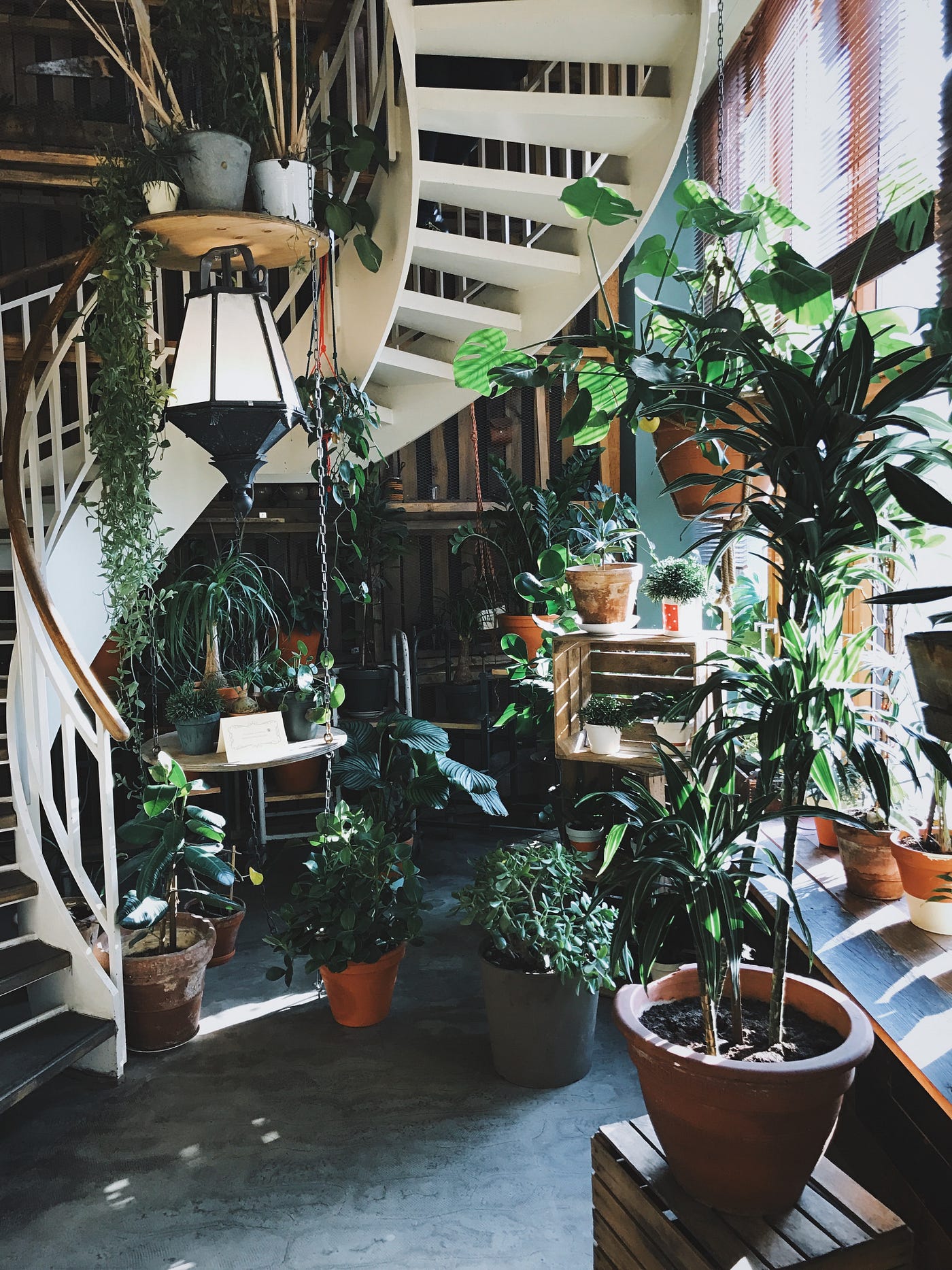I Inundated My House With Greenery. Here’s Why You Should Do The Same
We all love plants and greenery. They add a sense of homeliness to our houses, they look fantastic, and they’re living: with minimal work required on your part. Recent research suggests some more great reasons to surround yourself with plants, from being good for your brain and body to boosting mental health.

“To sit in the shade on a fine day, and look upon verdure is the most perfect refreshment.” — Jane Austen
Physiological benefits of greenery
Natural greenery has shown impressive benefits to mental health: it reduces chronic stress, uplifts our mood, reduces morbidity, and increases self-esteem, all while being gorgeous additions to our surroundings.
They also help with mental illnesses. For instance, a recent study of ISGLOBAL found a protective association between the amount and access to green space and anxiety and depression. Plants also improve concentration, increase social cohesion, make your memory stronger and promote innovation.
“The evidence is very solid,” — Marc Berman, a psychologist at the University of Chicago, concerning green environments increasing memory and creativity in people.
Physical benefits of greenery
Surrounding ourselves with greenery has proved to have numerous physical health benefits too. Some are traditional, commonly known benefits like purifying the air and absorbing excessive heat. Other lesser-known benefits include heightening physical activity and improving sleep.
All of the above factors contribute to better performance at work and school, better mental and physical health, and more fulfilling lives.
“Nature holds the key to our aesthetic, intellectual, cognitive and even spiritual satisfaction.” — EO Wilson
Why does greenery affect us this way?
A burgeoning number of ecologists and psychologists are studying the effects of greenery on mental health and well-being. The connections they are discovering are complex and not yet fully understood.
Humans have existed for about 300,000 years, and the oldest concrete jungles have only been around for only 6,000 of those years. In 1984, biologist Edward O. Wilson suggested the plant-rich environment in which humans had evolved shaped our brain to respond positively to greenery being in nature, explaining greenery’s feel-good nature.
Other theories suggest that greenery promotes mental health by providing a quiet, refreshing, and serene refuge with reduced exposure to other environmental annoyances such as air pollution and noise, which are bad for our brains.
Despite the ambiguity regarding the reason for greenery affecting us this way, it is clear that it boasts an array of positive advantages.
Heading towards a greener future
In a nationwide study, Denmark’s University of Aarhus found that childhood exposure to greenery through parks, forests, and others reduces the risk of developing many mental disorders during adolescence and adulthood. Furthermore, studies found that people who grew up with the least greenery near them had a 55% increased risk of developing conditions such as depression, anxiety, and substance abuse.
This, among numerous other studies, is prompting institutions to increase access to greenery for children and adults by, for instance, developing greener city plans and mapping places like classrooms and offices to have more plants.
What can you do?
- Surround your home with plants. Start small, with either seedlings from scratch or plants from the local nursery.
“Our study makes clear that it is not only the area of public greenspace in the whole city that matters when it comes to maximizing benefits for mental well-being. We provide evidence that the proximity of green space to an individual’s home is important for detecting significant associations with improved mental well-being, and that the strength of this association may vary in different areas of the city.”
Professor João Porto de Albuquerque, Director of the University of Warwick’s Institute of Global Sustainable Development
- Try migrating some of those plants to your workplace or school to cheer you up when you need it the most.
- Visit green spaces. Go to an urban garden, take a walk in your local city park, make a road trip out of it, and hit up a forest or a hill. Take your friends, family, and loved ones with you.
Plants are the perfect addition to any place you frequent. They look great, are suitable for the environment, and boost mental and physical health. So what are you waiting for? Get planting!
Taking care of your plants: A short guide
- Make sure to water your plants only when they’re dry. Drooping leaves are a sign that your plants are ready to be watered. More plants die from overwatering than they do from underwatering.
- When buying your plants or seeds, ensure that they are right for the climate of your region. If you plan to keep them inside your house, ensure you buy low-sunlight requiring varieties.
- Prune and wash your plants’ flowers and leaves regularly. This results in speedy growth and better-looking plants.
- Remember to have fun with them! Place them in bedrooms, bathrooms, and kitchens, play music for them, and enlist your family in taking care of them.
Good luck on your new green quest. Happy planting!


Comments
Post a Comment